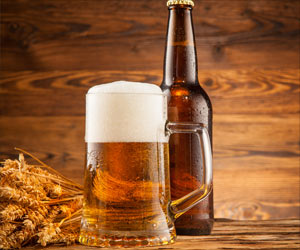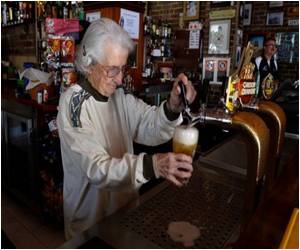Centuries-old beers from Belgium, a product of the tiny country, are getting popular

"Beer is to Belgium what wine is to France, it gives our small country a real identity," said Sven Gatz, director of the Belgian Brewers' Federation housed in an old guild hall on Brussels' central square, the Grand Place.
And if France famously is the land of 600 cheeses, then Belgium is the land of 1,000 beers.
"Sales of Belgian beer are exploding in Japan. After two decades as a niche drink, volumes increased fourfold just in the last two years," Gatz said.
The price of a pint of Belgian brew in a Tokyo pub is likely to be four times as expensive as in Brussels, however. "People order just one or two, as they would a glass of whisky or very good wine."
"The quality of our beers attracts the new young professionals," he added.
Advertisement
Beer like bread is thousands of years old and essentially composed of cereal, water and yeast. Said to be the third most popular drink after water and tea it is the globe's most widely consumed alcoholic beverage.
Advertisement
"German beers are pure, using only four elements (malt, yeast, hops and water), always made the same way" said Gatz. "We're all over the place, we do everything and anything."
Though Belgian produces good lagers right across the country "our special beers require specific savoir-faire on hops and yeasts or techniques such as refermenting beer in bottles," said Olivier Degehet of Bocq brewery that exports the well-known Blanche de Namur brand.
Belgium is home to the world's top beer-maker, Anheuser-Busch InBev (AB InBev), a multi-billion concern producing one in five of every beer sold.
And thanks to its global reach, the maker of Budweiser, Beck's and homegrown Stella Artois, as well as Leffe and Hoegaarden, has helped carve out a place for Belgium on the world map of beer.
"Belgium profited from the global boom in beer thanks to its positive image," said Vincent Caulier head of the eponymous brewery, one of the around 150 breweries turning out anywhere between 1,000 to 1,500 different beers.
As intake dropped in local watering-holes, the industry turned to the export market. "People drink less but go for quality and authenticity," he said.
Neighbouring France remains its top buyer in spite of looming trouble over a French excise tax, followed by the Netherlands, the US, Germany, Britain and Italy.
"The prospects look good in the remainder of Asia and in Latin America due to the rise of a middle class keen for classy foreign products," added Gatz.
Among the most popular brands are the trappist beers produced over centuries by monasteries. Belgium boasts six of the world's eight trappist brands, including Chimay, Orval and Westvleteren.
The latter's most famous brew, Westvleteren 12, is regularly voted first or second best of the world's beers by RateBeer.com.
The number in its name comes from its strength -- 12 percent -- reflecting the fact that many Belgian beers are known for their high alcohol content.
Belgium's 22 so-called "abbey" beers such as Grimbergen, Aflligem and Tongerlo are also popular abroad.
AB Inbev meanwhile has been playing the national card to the hilt for the last couple of decades through the launch of its Belgian Beer Cafes. There are now some 50 of them in 18 countries, from Australia to Thailand to the United Arab Emirates.
But as craft beers grow in popularity in the United States and elsewhere, Belgium's brewers and their 5,000 staff "can't rest on their laurels", Gatz said.
Source-AFP








